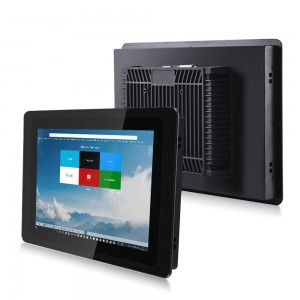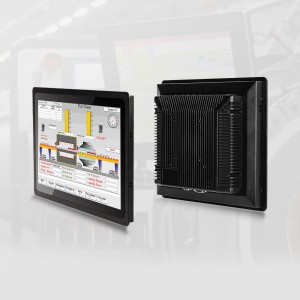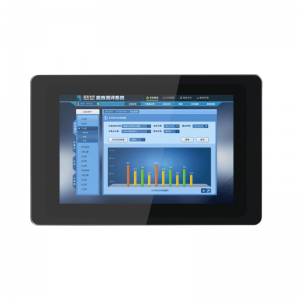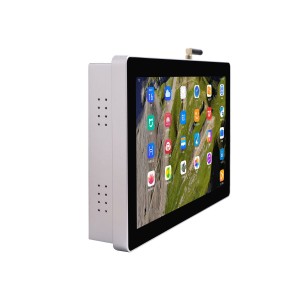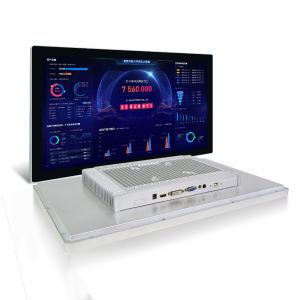V naší moderní společnosti založené na technologiích už monitory nejsou jen nástroje pro zobrazování informací, ale zařízení, která hrají zásadní roli v různých prostředích, od domácích kanceláří až po extrémní průmyslové aplikace. V tomto článku se podíváme do hloubky na rozdíly mezi spotřebitelskými a průmyslovými LCD monitory a také na klíčové výhody výběruprůmyslový monitor.
Přehled spotřebitelských LCD monitorů
Mezi klíčové vlastnosti spotřebitelských LCD monitorů, které jsou obvykle určeny pro stolní kanceláře nebo domácí zábavu, patří
Vhodné prostředí:
čisté kancelářské nebo domácí prostředí.
Doba použití: 6-8 hodin denně.
Trvanlivost: Obvykle se používají levné komponenty s typickou životností 3-5 let.
Kryt: Vyrobeno převážně z plastových materiálů, které nejsou odolné proti nárazům ani vodě.
Spotřebitelské monitory jsou cenově dostupnější a vhodné pro běžné domácí a kancelářské použití, ale nemohou splnit přísné požadavky průmyslových aplikací.
Výhody průmyslových LCD monitorů
Design a odolnost
Průmyslové LCD monitory jsou určeny pro náročná průmyslová prostředí
Použitelná prostředí:
včetně průmyslových, vojenských, lékařských, námořních a dalších oborů.
Nepřetržitý provoz: Podpora 24/7/365 provozu za každého počasí.
Trvanlivost: Vysoce odolná proti nárazům a vibracím, s širokým rozsahem provozních teplot od -40° do +185°F.
Kryt: Robustní ABS, ocelový plech, nerezová ocel a vodě/prach odolné provedení.
Tyto funkce umožňují displejům průmyslové kvality pracovat stabilně po dlouhou dobu v drsných prostředích ve scénářích, jako jsou průmyslové výrobní závody, lékařské vybavení a námořní plavidla.
Kvalita a životnost produktu
Monitory průmyslové třídy jsou vyrobeny z vysoce kvalitních komponentů, které zajišťují dlouhodobou spolehlivost a vynikající kvalitu obrazu
LCD panely:
LCD panely nejvyšší kvality jsou vybrány tak, aby poskytovaly optimalizovaný vizuální zážitek.
Životnost: Typická životnost je až 7-10 let, což je vhodné pro OEM, kteří potřebují stabilní dodávky po dlouhou dobu.
Naproti tomu displeje pro spotřebitele mají kratší životnost a časté aktualizace modelů, takže nejsou vhodné pro dlouhodobě stabilní prostředí aplikací.
Oblasti použití a možnosti konfigurace
Monitory průmyslové kvality jsou široce používány v různých průmyslových odvětvích a specifických aplikačních scénářích
Oblasti použití:
Zahrnuje průmyslovou výrobu, lékařství, armádu, telemedicínu, digital signage, hromadnou dopravu, ropu a plyn atd.
Možnosti konfigurace: K dispozici je široká škála možností konfigurace, jako je standardní jas, dotyková obrazovka, vodotěsnost, montáž na panel atd., které lze přizpůsobit a vybrat podle konkrétních potřeb.
Monitory spotřebitelské třídy obvykle nabízejí pouze standardní konfigurace, které nemohou uspokojit různorodé a přizpůsobené potřeby.
VýhodyCOMPTPrůmyslové monitory
Kromě tradičních průmyslových monitorů LCD nabízí COMPT Corporation průmyslové monitory s následujícími významnými výhodami:
Možnost přizpůsobení:
lze přizpůsobit tak, aby splňovaly specifické požadavky zákazníků, včetně specifických funkcí, vnějšího designu a služeb privátních značek.
Aplikace inovativní technologie: Přijetí nejnovějšího LCD panelu a technologie pro zajištění vynikajícího vizuálního efektu a dlouhodobého stabilního provozu.
Široká škála aplikací: neomezuje se pouze na tradiční průmyslové aplikace, ale lze je aplikovat také na lékařské vybavení, vojenské aplikace, vzdálené monitorování a mnoho dalších průmyslových odvětví.
Průmyslové monitory COMPT jsou více než jen zařízení, jsou důležitým nástrojem pro poskytování efektivních řešení zákazníkům. Výběrem produktů COMPT mohou zákazníci získat kvalitní vybavení a profesionální technickou podporu pro zajištění efektivního provozu v různých náročných prostředích.
Závěr
Výběr správného LCD monitoru závisí na konkrétních potřebách aplikace a podmínkách prostředí. Monitory spotřebitelské kvality jsou vhodné pro každodenní kancelářské a domácí použití, zatímco průmyslové monitory se lépe hodí pro scénáře, které vyžadují dlouhodobý stabilní provoz a práci v náročných prostředích. Pochopením těchto rozdílů si budete moci lépe vybrat monitor, který nejlépe vyhovuje vašim potřebám, což povede ke zvýšení produktivity a spolehlivosti zařízení.
Porovnáním a pochopením rozdílů mezi LCD monitory spotřebitelské a průmyslové třídy doufáme, že tento článek pomůže čtenářům činit informovaná rozhodnutí v různých aplikačních scénářích pro nejlepší zážitek a výkon.
Čas odeslání: 21. června 2024



